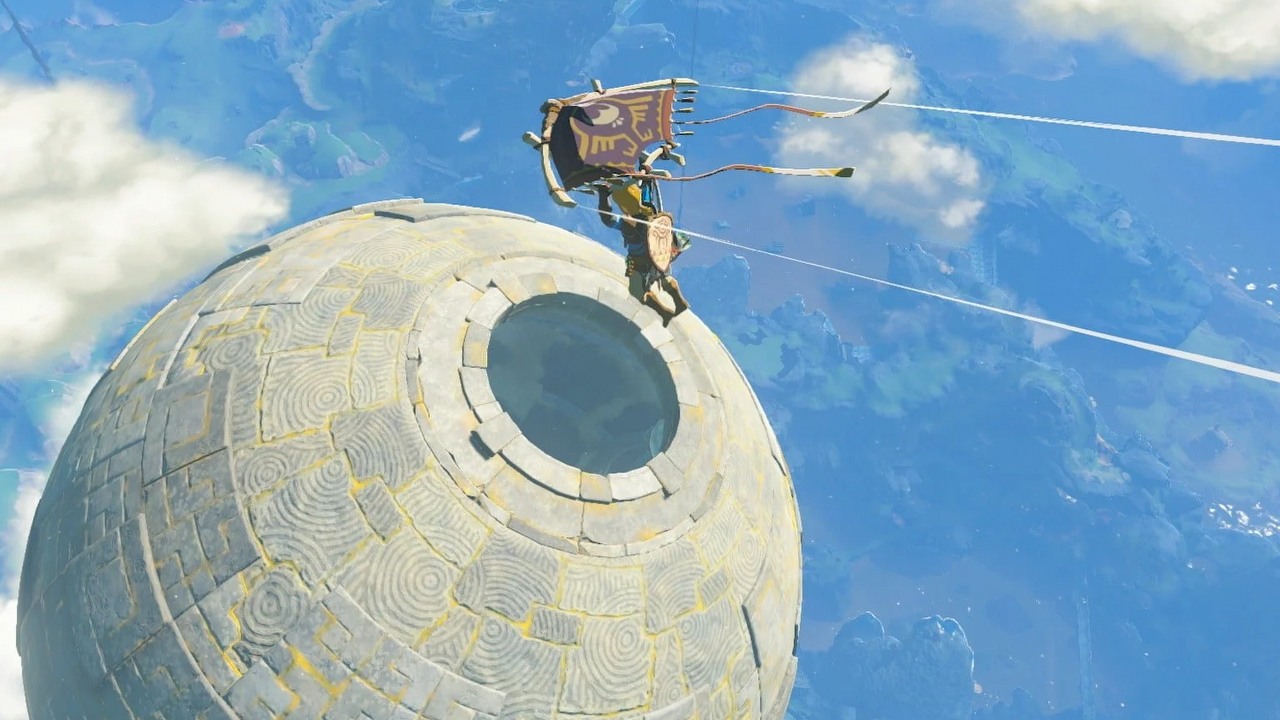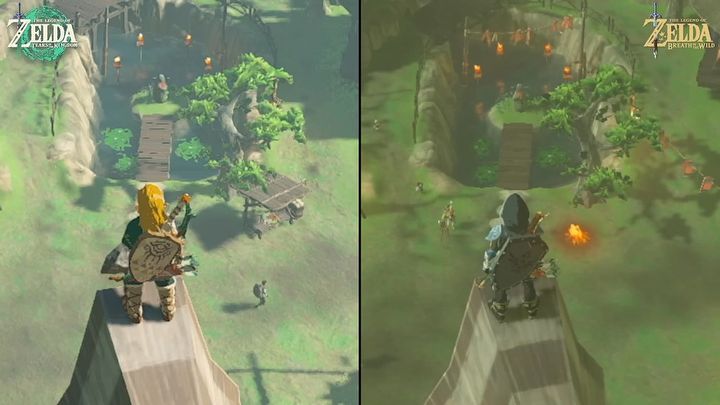It's a Miracle Zelda Tears of the Kingdom Runs so Well on Switch
Zelda: Tears of the Kingdom is considered an excellent game in almost every way. Also considered excellent is the remarkably good technical condition and optimization on Switch.

It's only been a few days since the release of The Legend of Zelda: Tears of the Kingdom, and already it's safe to say that the entire gaming world has gone crazy about it. Excellent ratings from reviewers, fans queuing up for their boxed copy - all this adds up to a picture of a game that can confidently be called a strong candidate for the title of game of the year.
In all the launch frenzy, however, there was another important question being asked: how will Tears of Kingdom run on its dedicated platforms?
Such a large open world with no loading screen (supposed to be the future of the series, according to Eiji Aonuma) certainly is a big strain on the components of the Nintendo Switch - console, which, let's face it, is not very good at adoing the heavy lifting. However, it turns out that also in this field the sequel to Breath of the Wild passes the test (at least most of the time).
Stable fps of the new Zelda
Digital Foundry, known for its in-depth analysis of games from technical perspective, recently took a look at Tears of the Kingdom. The successor to Breath of the Wild impresses in many respects: it offers dynamic lighting, changing weather and day and night cycles, as well as a physics system that finds use in, among other things, Ultra-Hands - the mechanics of combining objects. As a result, Hyrule gives the impression of a huge, living world.
The price for using such complex systems and technologies (at least in theory) should be high system requirements. However, it turns out that Nintendo manages it all, maintaining a stable 30 fps for the vast majority of the time.
The biggest drops occur in Ultra-Hand mode, probably due to the strong impact of the physics engine on Switch's components - at these moments the game occasionally drops to about 10 frames down. Some locations and a lot of movement on the screen can also strain the performance, but it happens so rarely that, according to experts, the optimization can be written on the plus side anyway.
Most likely, a large share of such good condition Tears of the Kingdom is due to the resolution scaling technology FidelityFX Super Resolution (FSR) from AMD, which can bump up the resolution: in TV mode to 1080p, and in the portable option to 720p.
New Zelda also employs clever tricks, noted by Digital Foundry experts - one of which is increasing the resolution on a still image and decreasing it when the player rotates the camera. The differences aren't so noticeable because our gaze is in motion, and the game saves precious resources this way.
This and other clever solutions allowed for a compromise of near-smooth 30 fps. The question remains - will Nintendo's next hits do just as well on the same hardware? Or is it already time for the Nintendo Switch 2?
0

Author: Michal Ciezadlik
Joined GRYOnline.pl in December 2020 and has remained loyal to the Newsroom ever since, although he also collaborated with Friendly Fire, where he covered TikTok. A semi-professional musician, whose interest began already in childhood. He is studying journalism and took his first steps in radio, but didn't stay there for long. Prefers multiplayer; he has spent over 1100 hours in CS:GO and probably twice as much in League of Legends. Nevertheless, won't decline a good, single-player game either.
Latest News
- End of remote work and 60 hours a week. Demo of Naughty Dog's new game was born amid a crunch atmosphere
- She's the new Lara Croft, but she still lives in fear. Trauma after Perfect Dark changed the actress' approach to the industry
- „A lot has become lost in translation.” Swen Vincke suggests that the scandal surrounding Divinity is a big misunderstanding
- Stuck in development limbo for years, ARK 2 is now planned for 2028
- Few people know about it, but it's an RPG mixing Dark Souls and NieR that has received excellent reviews on Steam, and its first DLC will be released soon



